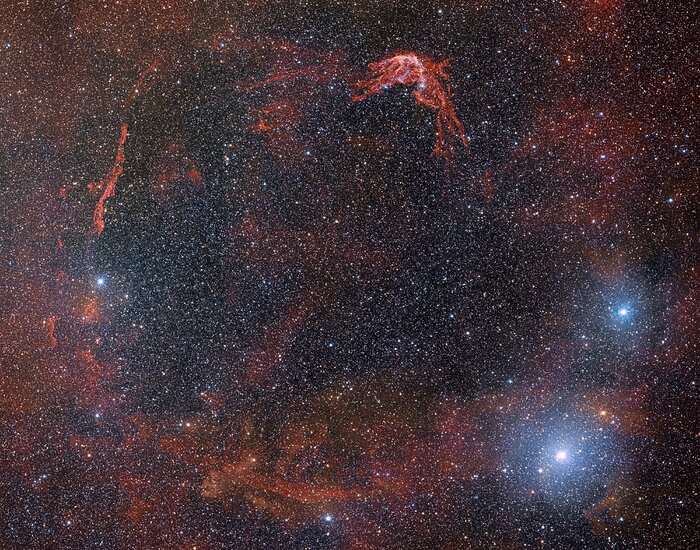Dark Energy Camera captures glowing remains of supernova from the year 185

In 185 C.E., Chinese astronomers witnessed a mysterious guest star that remained in the sky for eight months before fading from view and it is thought to be the earliest recorded supernova. The US Department of Energy-fabricated Dark Energy Camera (DECam) has now captured the glowing remains of this white-dwarf star that exploded more than 1800 years ago.
The supernova, called SN 185, occurred more than 8000 light-years away in the approximate direction of Alpha Centauri, between the constellations of Circinus and Centaurus. It is around 100 light-years across.
What remains today is a glowing ring of debris. This image by DECam covers an impressive 45 arcminutes on the sky, giving a rare view of the entirety of this supernova remnant. The resulting structure, named RCW 86, helps shed light on how the remains of the supernova evolved over the years.
Previously, astronomers believed that the perplexing structure we see today would take approximately 10,000 years for a traditional core-collapse supernova to form, which would have made the structure much older than the supernova observed in 185 C.E. However, the new estimate aligns more closely with a youthful age of around 2,000 years, thereby reinforcing the connection between RCW 86 and the guest star observed hundreds of years ago.
"Astronomers now have a more complete picture of how RCW 86 formed. As the white dwarf of the binary system swallowed the material of its companion star, its high-velocity winds pushed the surrounding gas and dust outward, creating the cavity we observe today. Then, when the white dwarf could not support any more mass falling onto it from the companion star, it exploded in a violent eruption. The previously formed cavity gave ample room for the high-velocity stellar remnants to expand very quickly and to create the monumental features we see today," NSF's NOIRLab explained in a post.
The Dark Energy Camera is mounted on the National Science Foundation's (NSF) Víctor M. Blanco 4-meter Telescope at Cerro Tololo Inter-American Observatory in Chile, a Program of NOIRLab.










